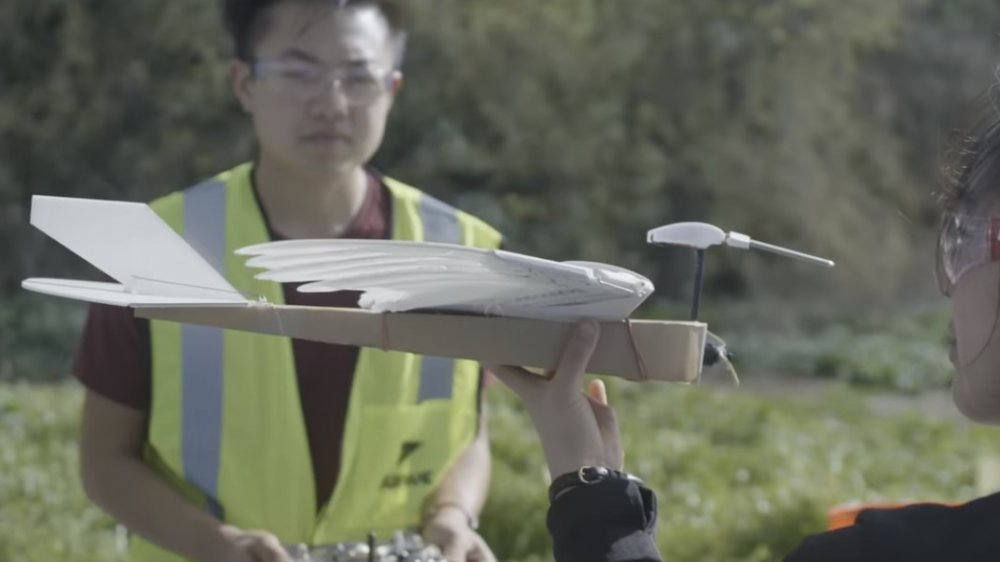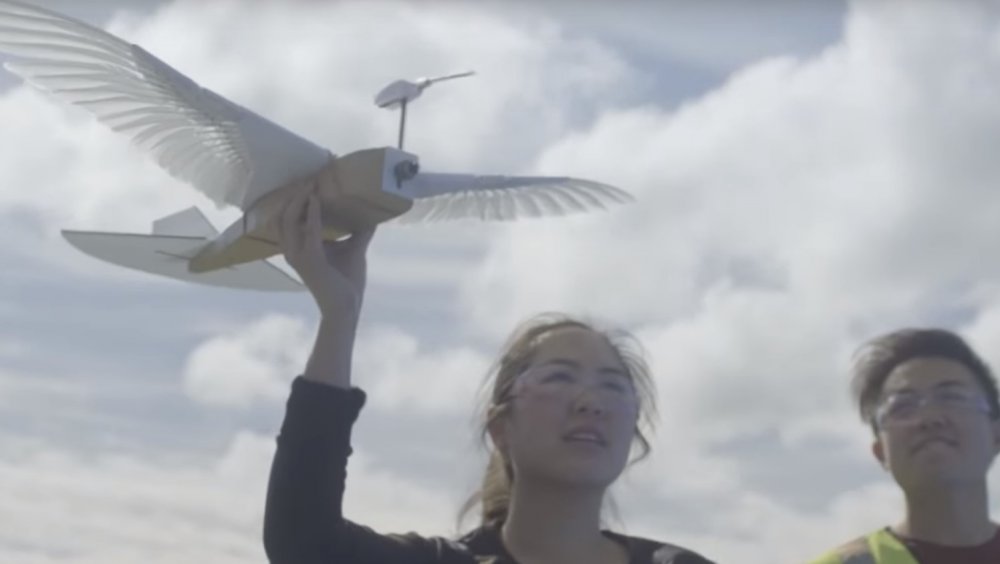Is 'PigeonBot' The Future Of Drones?
Take a look at your standard post-apocalyptic killer robot dystopia and you'll notice a glaring omission. You'll see people-shaped robots, motorcycle robots, helicopter robots, pretty lady robots, and robots made out of whatever Capri Sun used to turn people into in those commercials from the '90s. Conspicuously absent, however, are robots that nom on popcorn and drop a wet dump on your car right after you get it washed.
Maybe that's why scientists at Stanford University's Lentink Lab have developed PigeonBot, the unmanned aerial vehicle modeled after nature's favorite cowboy hat-wearing avians.
All hail PigeonBot, destroyer of worlds
PigeonBot is the brainchild of Eric Chang, Laura Y. Matloff, Amanda K. Stowers, and David Lentink. As laid out in a research paper published in Science Robotics on January 16th, 2020, these researchers from the Department of Mechanical Engineering at Stanford set out to create a more nimble, graceful drone capable of adapting to environmental shifts with the same ease as the dead-eyed vermin that gang up on you every time you walk under an overpass. The team looked to nature for guidance, collecting dead pigeons and experimenting on their decaying wings in what scientists refer to as "a C-lister Spider-Man villain origin story."
They discovered that pigeon wings, when affixed to a static metal body, could be used to easily maneuver flying robots, with a single simulated muscle movement allowing for banking turns. They cited pigeon feathers as being part of the key to their success, pointing out that they've developed to stick to each other like velcro, allowing them to automatically fill any gaps in a bird's wingspan.
With pigeons more or less out of the way, the door is now open for even more grotesque creatures to serve as the inspiration for future automatons. With any luck, by this time next year, we'll finally have RoboFerrets.
What's that? We've had those for a decade? Gosh, life is a nightmare.

